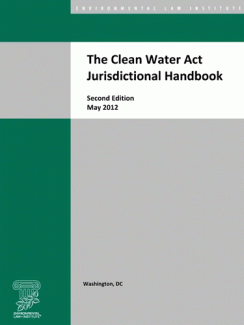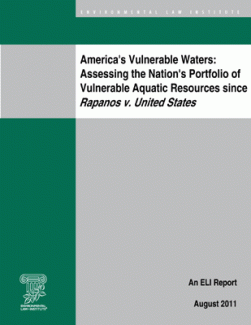National Forum on Synergies Between Water Quality Trading and Wetland Mitigation Banking
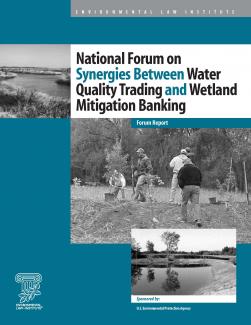
The National Forum on Synergies Between Water Quality Trading and Wetland Mitigation Banking report summarizes the discussions from the Forum, held July 11-12, 2005, in Washington DC. The two-day event was designed to bring together experts in wetland mitigation banking with those in the water quality trading community to facilitate a dialogue on stimulating future markets in water quality trading.
The Federal Wetland Permitting Program: Avoidance and Minimization Requirements
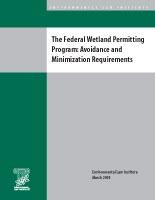
Significant attention has been paid over the past 20 years to improving the third step in the mitigation sequencing requirement of the Clean Water Act § 404 regulatory program—-compensatory mitigation—-to ensure that the compensation being provided is ecologically effective, self-sustaining, protected in perpetuity, has “assurances of long-term sustainability and stewardship,” and ultimately meets the program’s goal of no net loss. This report focuses on the first two steps in the sequencing process which, to date, have received far less attention: avoidance and minimization.
Planner's Guide to Wetland Buffers for Local Governments
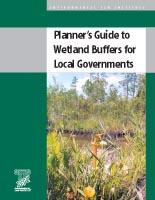
The upland area surrounding a wetland – the wetland buffer – is essential to its health and survival. Healthy wetlands and buffer areas help to control flooding, protect water flows, conserve native plants and wildlife, and support nature-friendly land use and development. Local governments are often better situated than state and federal environmental authorities to control activities on the lands that surround wetland resource areas, because they are not just concerned with wetland functions, but also with surrounding land uses and the benefits wetlands provide for their communities.
A Handbook for Prioritizing Wetland and Stream Restoration and Protection Using Landscape Analysis Tools
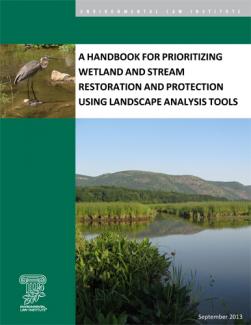
A Handbook for Prioritizing Wetland and Stream Restoration and Protection Using Landscape Analysis Tools (2013), provides states, tribes, and local governments with information about the range of tools used by wetland programs across the country to prioritize wetlands and streams for restoration and protection. The handbook is intended to help guide the development, establishment, and refinement of approaches for identifying restoration and protection priorities.
Protecting Wetlands and Wildlife Habitat While Reducing Flood Losses: A Guidebook on Interagency Collaboration in the Mississippi River Basin
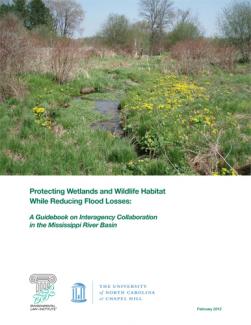
The purpose of Protecting Wetlands and Wildlife Habitat While Reducing Flood Losses: A Guidebook on Interagency Collaboration in the Mississippi River Basin is to illustrate the opportunities for wetland managers, hazard mitigation planners and other conservation and hazard mitigation professionals to work together to protect wetlands, water quality, and wildlife habitat and strengthen resilience to flooding in the Rock River Basin as well as the entire Upper Mississippi River Basin.
State Constraints: State-Imposed Limitations on the Authority of Agencies to Regulate Waters Beyond the Scope of the Federal Clean Water Act
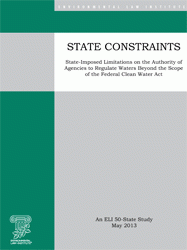
ELI has released a 50-state study identifying laws that can limit the ability of state agencies to protect wetlands, streams, and other water resources more broadly than federal law. The study finds that over two-thirds of all U.S. states have versions of these “stringency” and property rights laws.
In-Lieu Fee Mitigation: Model Instrument Language and Resources
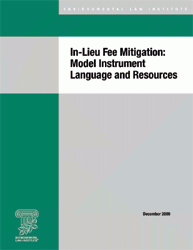
This report offers model language that could be incorporated into in-lieu fee program instruments being developed by state agencies and non-profit organizations. It was designed to comply with the 2008 Compensatory Mitigation Rule. It was developed using the best available information and uses examples from the approved and draft in-lieu fee instruments that were available as of December 2009. Funding for this project was made possible thanks to a grant provided by the U.S. Environmental Protection Agency.
Wetland Avoidance and Minimization in Action: Perspectives from Experience
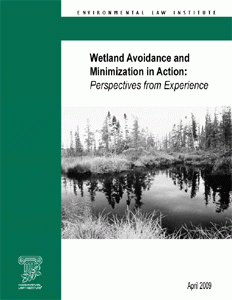
The first two steps in the CWA section 404 sequencing process have received far less attention at a national level. This study looks at how the avoidance and minimization requirements are applied by permitting officials in state and federal regulatory and resource agencies, where they find weaknesses, and how the process could be improved.
